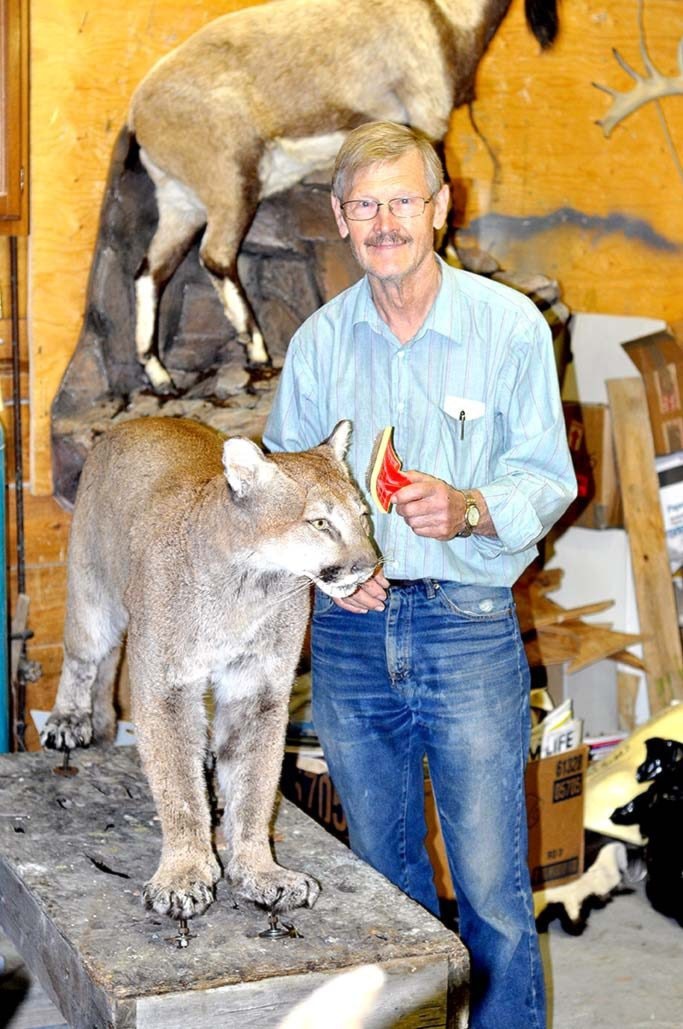An icon of the taxidermy world will be closing its doors in the next few weeks as Odd Aasland of Aasland Taxidermy and his wife Joyce retire.
Odd has spent 65 years on the craft of taxidermy and has been at the Highway 2B location for over 40 years.
They built the current location in 1972, but arrived in Cranbrook in 1964.
"We had a shop downtown before we came out here," Odd said. "It had been a store. It was on Baker Street, but was located in the building that burned down."
He said they built the present location with the idea that it would be a taxidermy shop as well as a museum.
"We got so busy with the taxidermy that we never got around to getting the museum to the point where we wanted it," he said.
Joyce said that hasn't stopped them from having groups and those passing through from touring the workshop/museum. They've had school kids, as well as students of biology, art and nature.
"Taxidermy is a complex art and sculpting is a major part of it," said Odd. "We have a lot of students who are interested in art. We get visitors from the Canadian Institute of the Blind, who had never been able to get their hands on a real duck or real badger. This gives them an opportunity to see what they're like and the structure. As far as school kids are concerned, we get a lot of school kids who are studying anatomy and something like that with this extensive skulls collection. They learn the difference between omnivores, herbivores and carnivores. They are always quite fascinated with seeing the skulls from different animals as well."
The Aaslands have began moving some of the specimens out, but there is still quite a large selection of the collection there.
"What we're looking for now is a home for some of these things," he said.
Odd said he became interested in Taxidermy when he was a kid and would see the mounted critters and animals in the sporting goods stores.
"I think I was probably around 6, 7 years old at that time, but it just carried on," he said. Eventually he took a correspondence courses and got a diploma.
Odd's work goes far beyond the simply mounting the hides on a mannequin. He takes pride in the very meticulous work that goes into creating the sculptures as well as the lifelike and anatomically correct animal mounts.
He said taxidermy is a complex art where you have to be a sculpture, tanner and artist.
His work is museum-quality and in fact many of his works are exhibited in museums.
Even the rocks, made of foam or other lightweight materials, are indistinguishable from real rock, until you pick them both up.
The many animals that look down from the walls are just a fraction of the mounts that he's down.
There are deer, sheep, bears, elk and moose, but then there are also more exotic ibex, water buck and kudu. Odd also has an extensive animal skull collection.
If you have an interest in animals, you owe it to yourself to stop by the museum before it is closed down for good.
Odd and Joyce wish to thank all their clients and friends for supporting them over the past many years.
